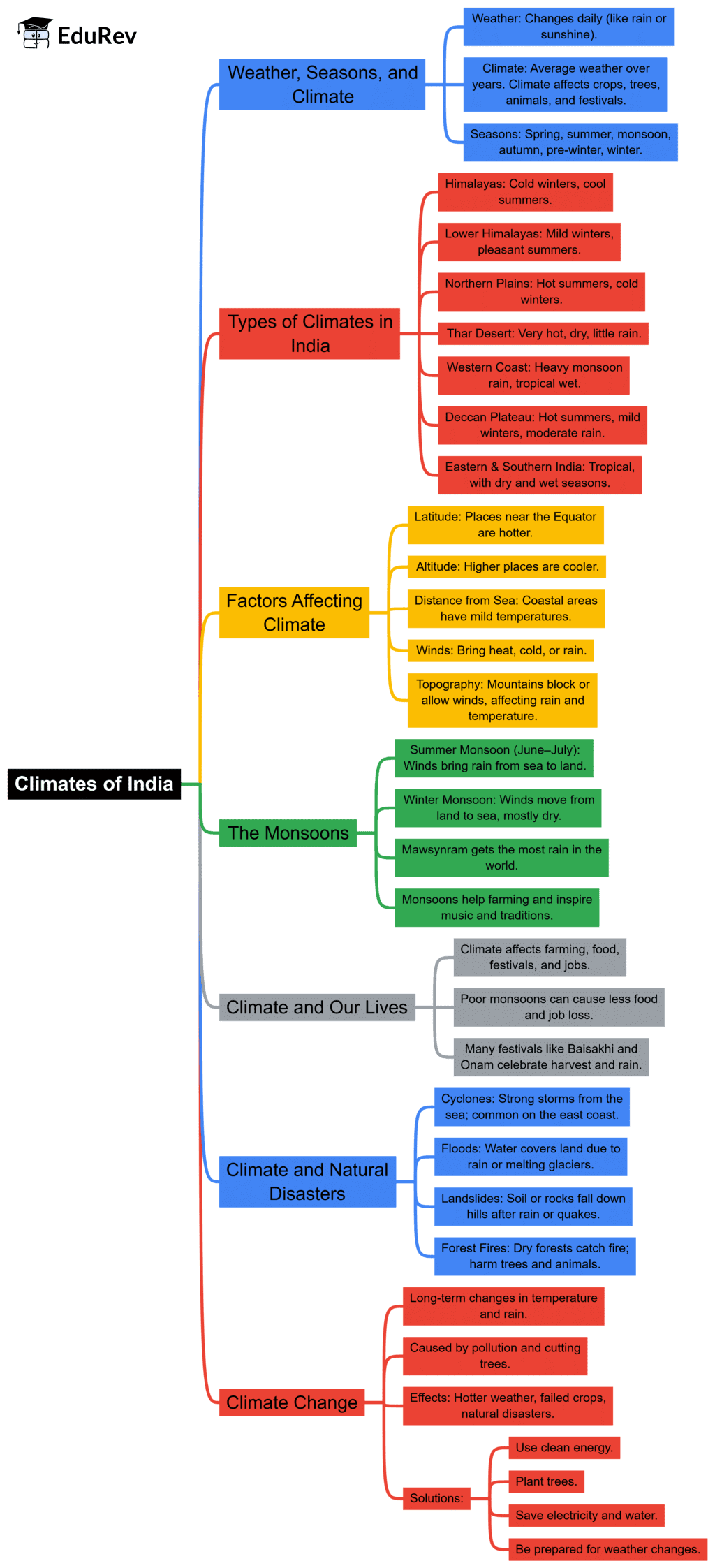Class 7 Exam > Class 7 Notes > Subject-Wise Mind Maps for Class 7 > Mind Map: Climates of India
Class 7 Social Science Chapter 3 Mindmap - Climates of India

The document Class 7 Social Science Chapter 3 Mindmap - Climates of India is a part of the Class 7 Course Subject-Wise Mind Maps for Class 7.
All you need of Class 7 at this link: Class 7
FAQs on Class 7 Social Science Chapter 3 Mindmap - Climates of India
| 1. What are the major types of climates found in India? |  |
Ans. India experiences a diverse range of climates due to its vast geographical expanse. The major types include Tropical Monsoon Climate, Tropical Wet and Dry Climate, Subtropical Humid Climate, and Mountain Climate. Each region has its own distinct weather patterns influenced by factors such as altitude, proximity to the sea, and prevailing winds.
| 2. How do the seasonal changes affect the climate in India? |  |
Ans. India has four main seasons: winter, summer, monsoon, and post-monsoon. Winter (December to February) is generally cool and dry, summer (March to June) is hot, the monsoon (June to September) brings heavy rainfall, and post-monsoon (October to November) is characterized by a gradual decrease in temperature and occasional rainfall. These seasonal changes significantly impact agriculture, water supply, and daily life.
| 3. What role do the Himalayas play in influencing India's climate? |  |
Ans. The Himalayas act as a barrier, preventing cold winds from Central Asia from moving into the Indian subcontinent, which helps maintain a warmer climate in the northern plains. Additionally, they influence the monsoon winds, causing heavy rainfall in the foothills while creating a rain shadow effect in regions like Ladakh and parts of Himachal Pradesh.
| 4. How does the monsoon season impact agriculture in India? |  |
Ans. The monsoon season is crucial for agriculture in India as it provides the majority of the annual rainfall needed for crops. Farmers rely on the timely arrival and adequate distribution of monsoon rains to grow staple crops like rice, wheat, and pulses. However, excessive or insufficient rainfall can lead to crop failure and affect food security.
| 5. What are the effects of climate change on India's climate? |  |
Ans. Climate change is leading to unpredictable weather patterns, increased frequency of extreme events like floods and droughts, and rising temperatures in India. These changes threaten agriculture, water resources, and biodiversity, posing significant challenges for sustainable development and livelihoods in the country.
Related Searches





















